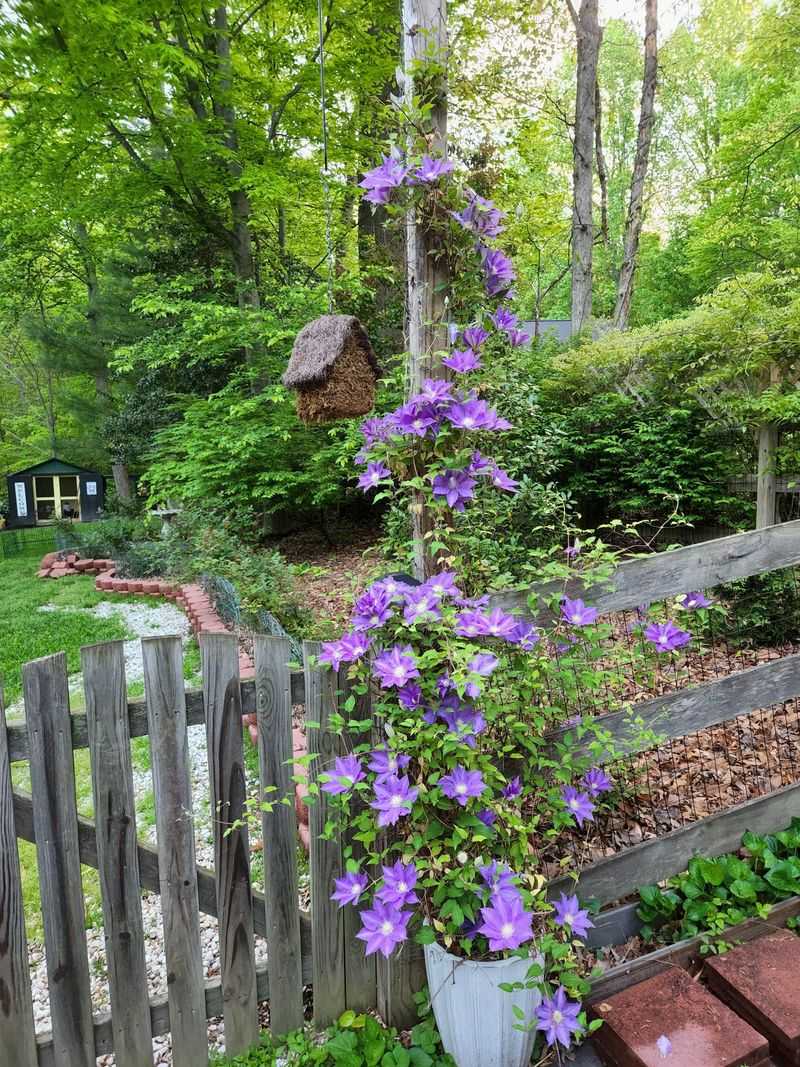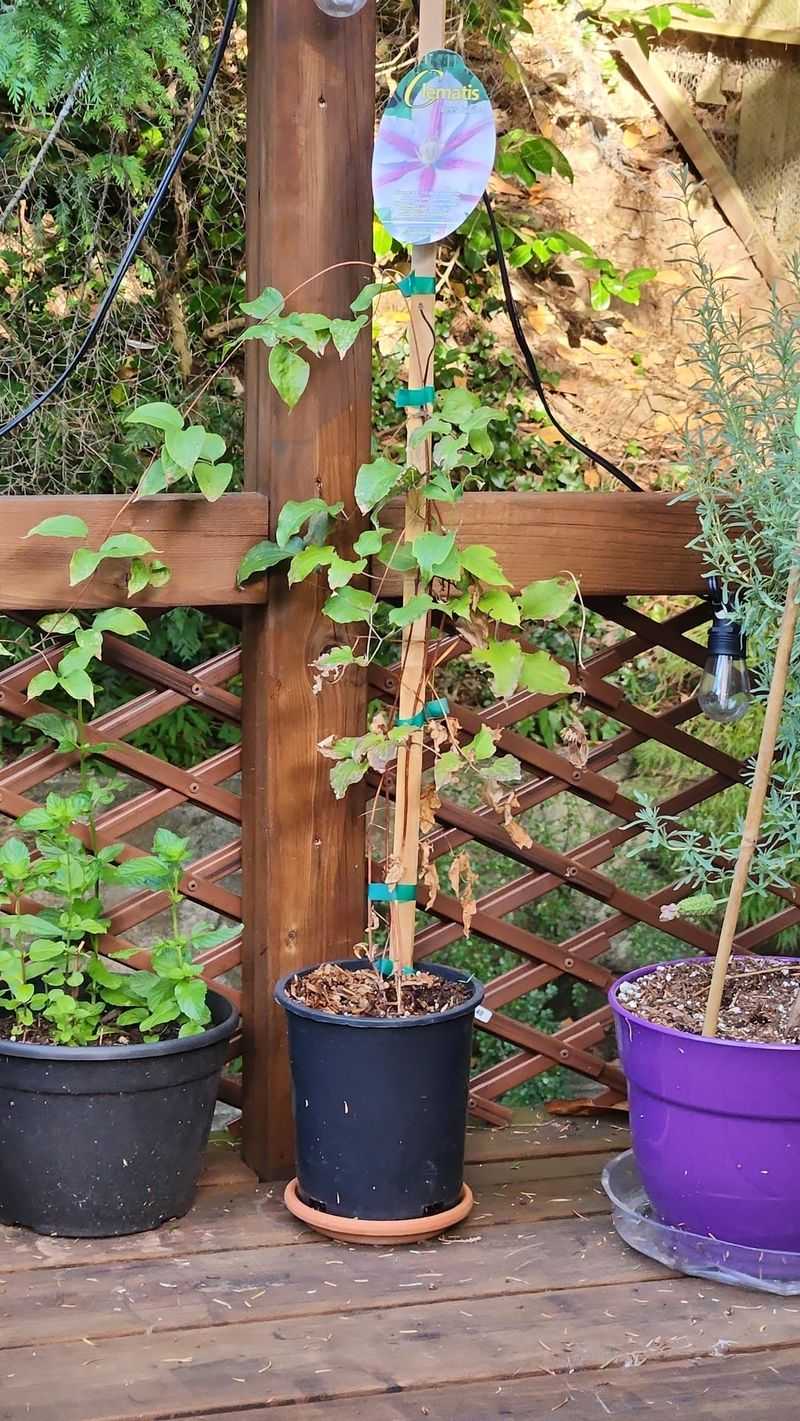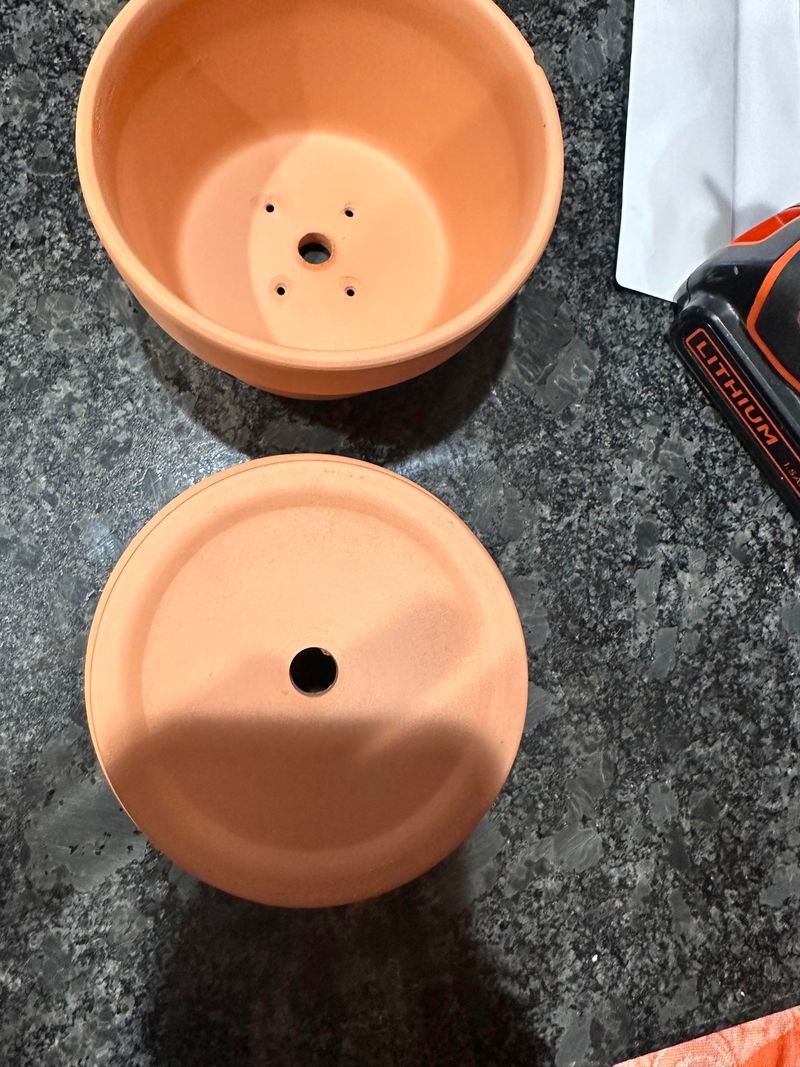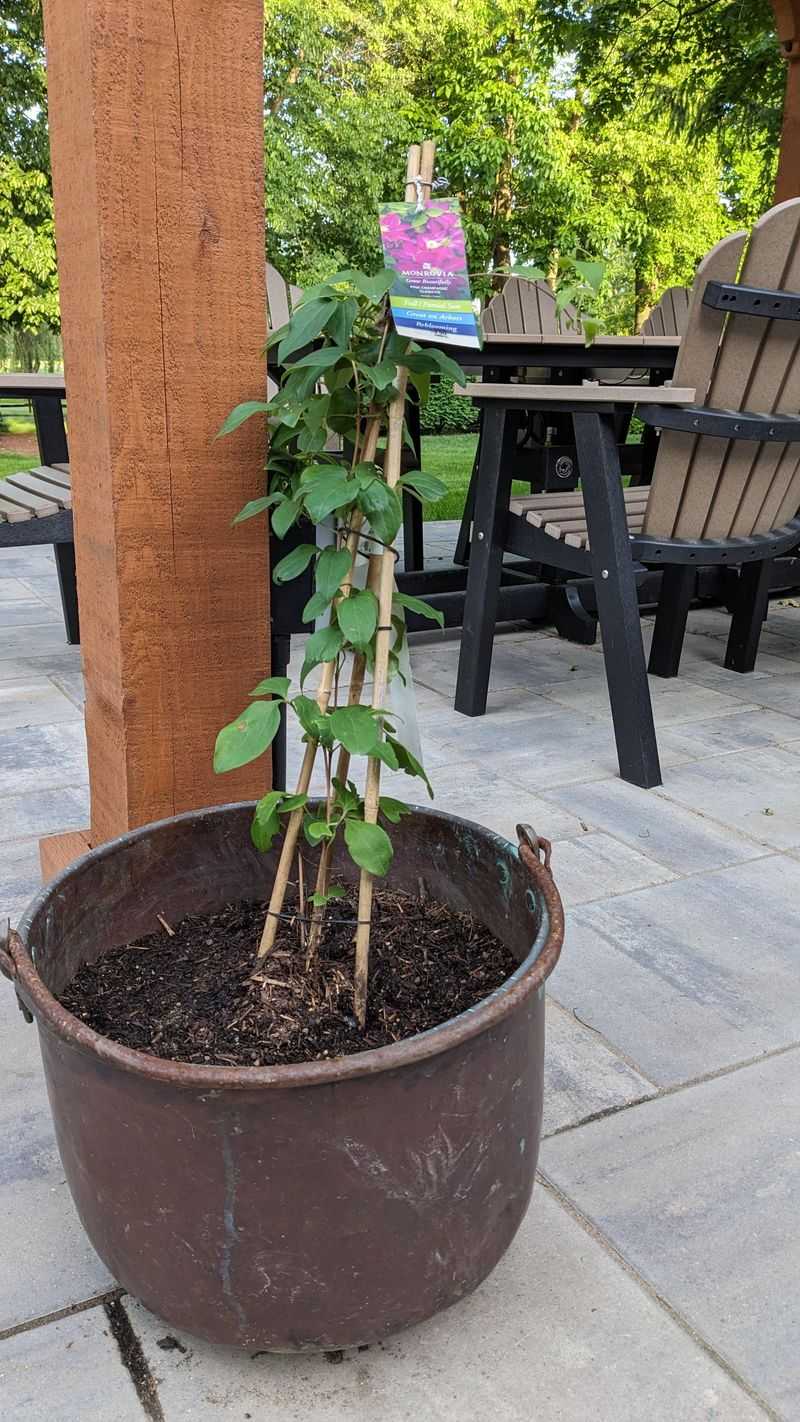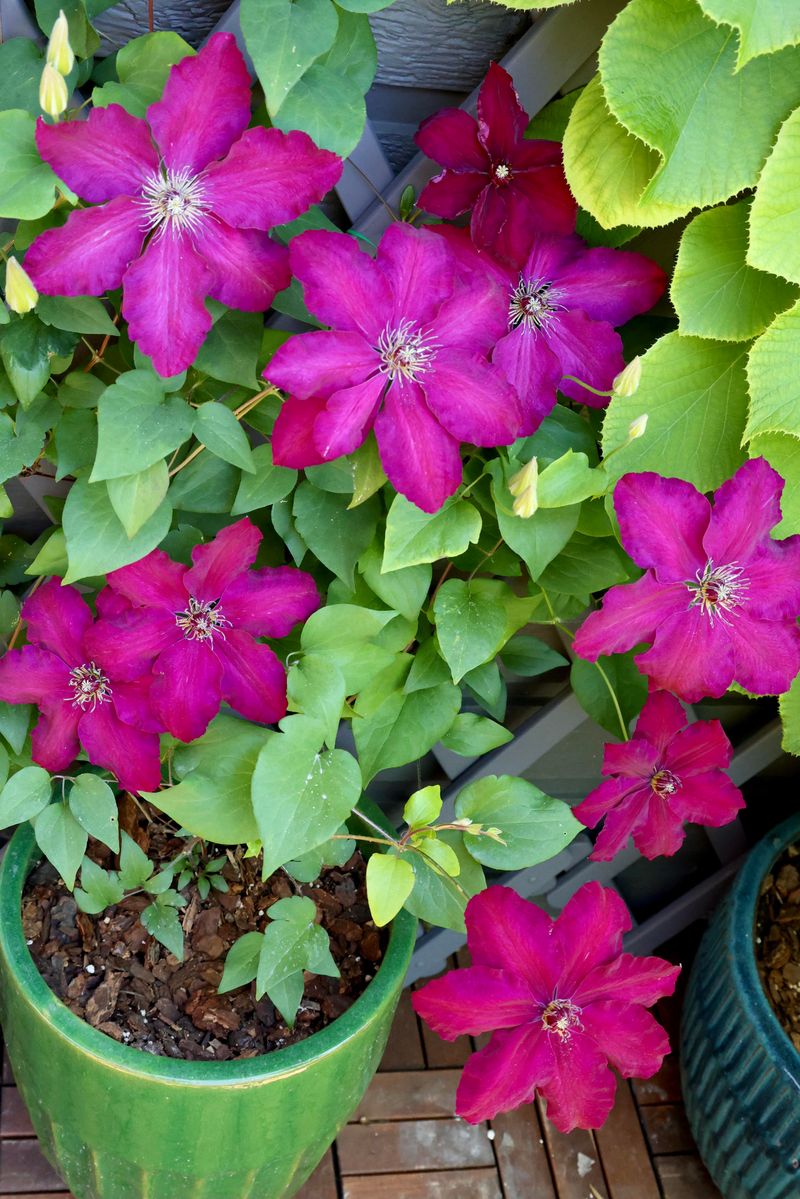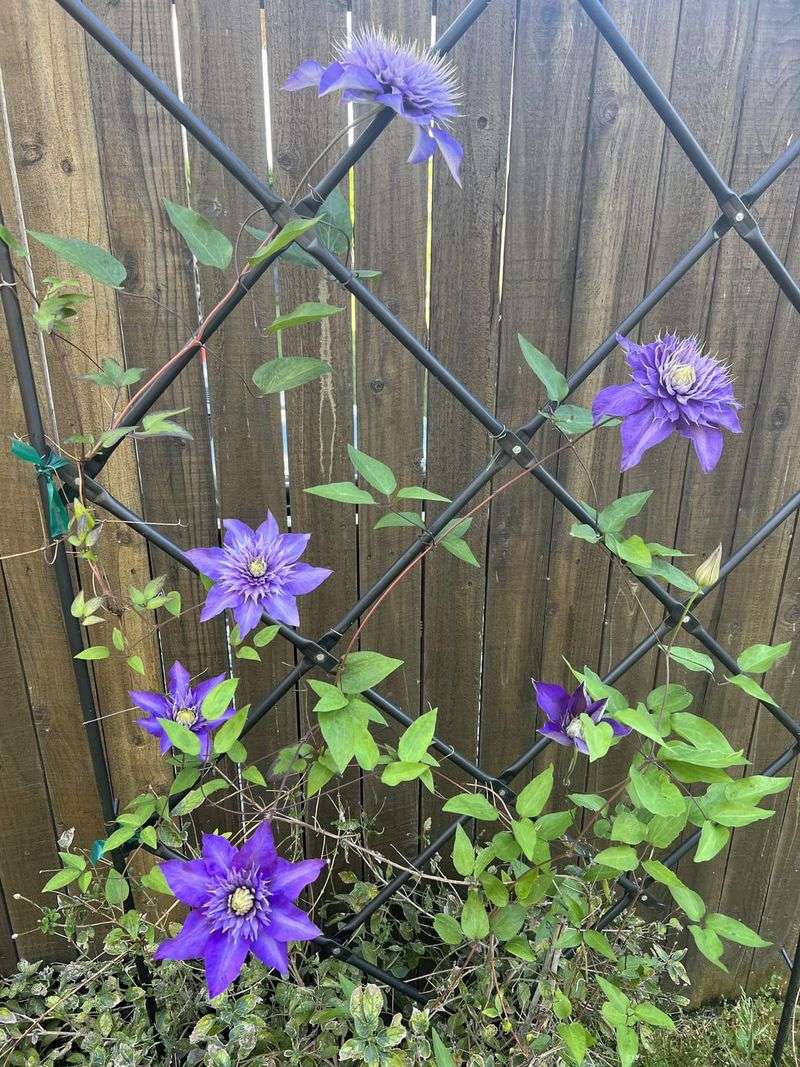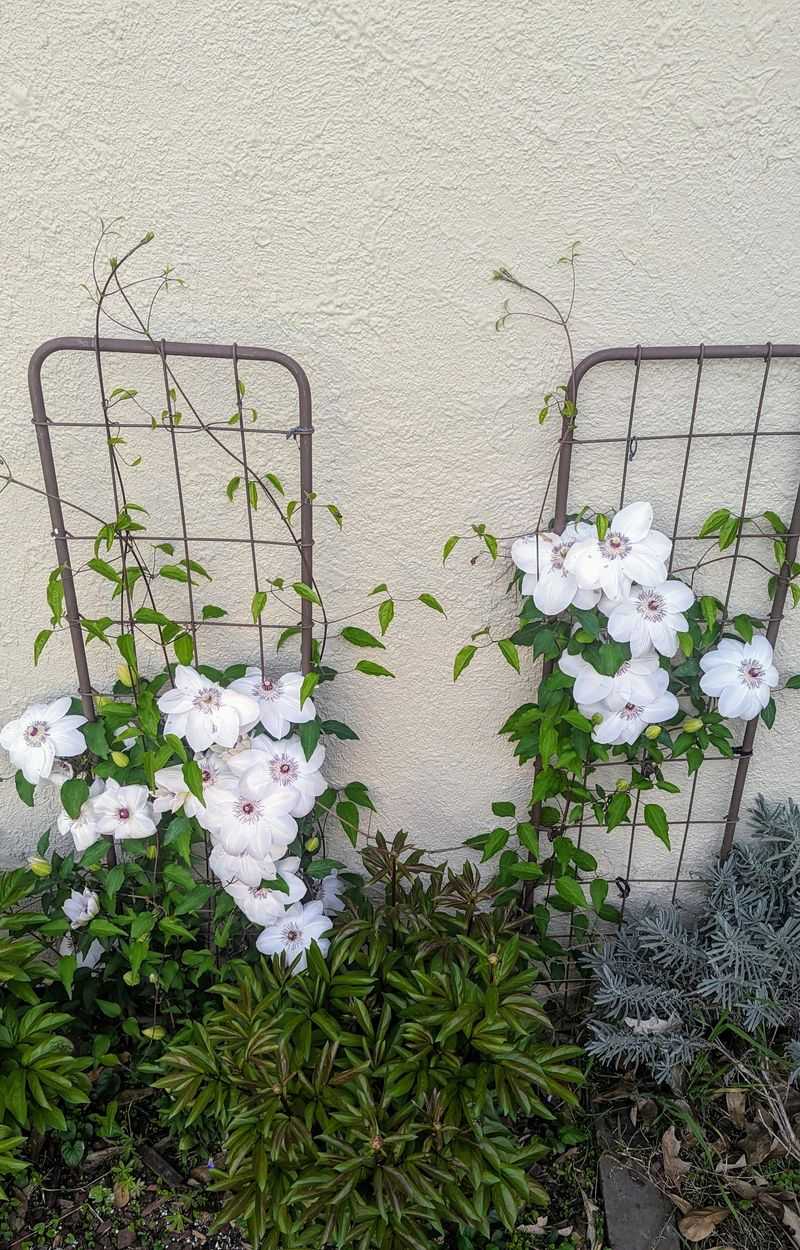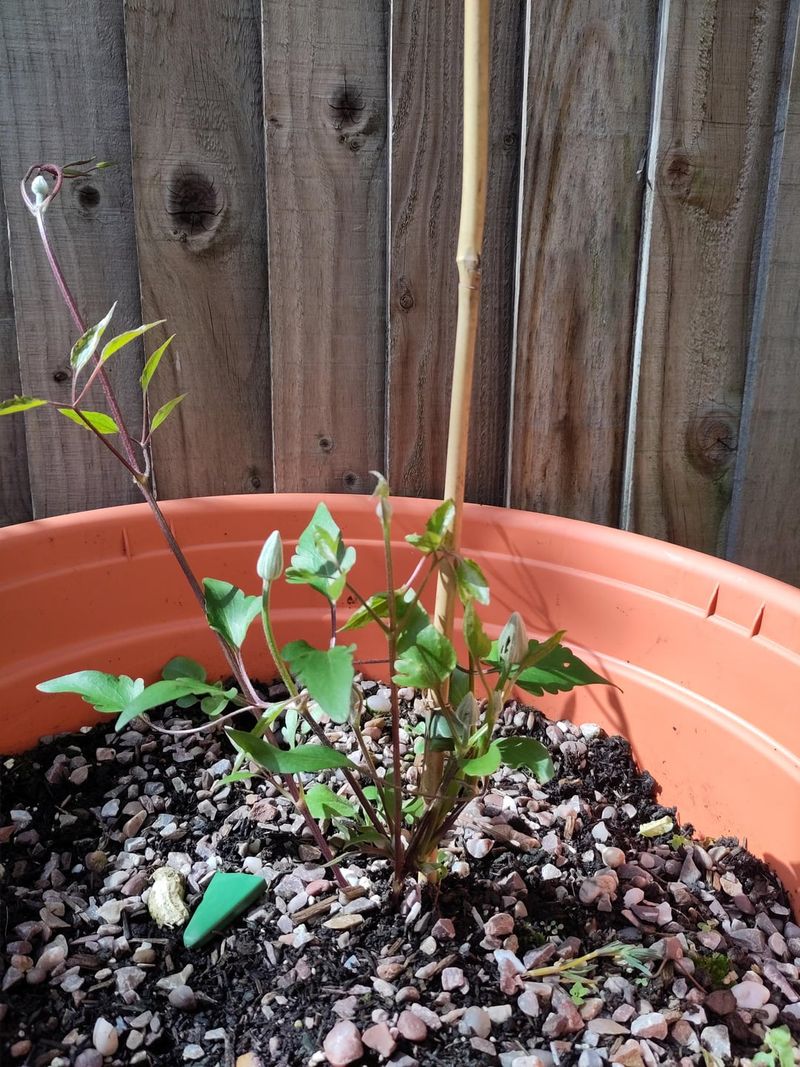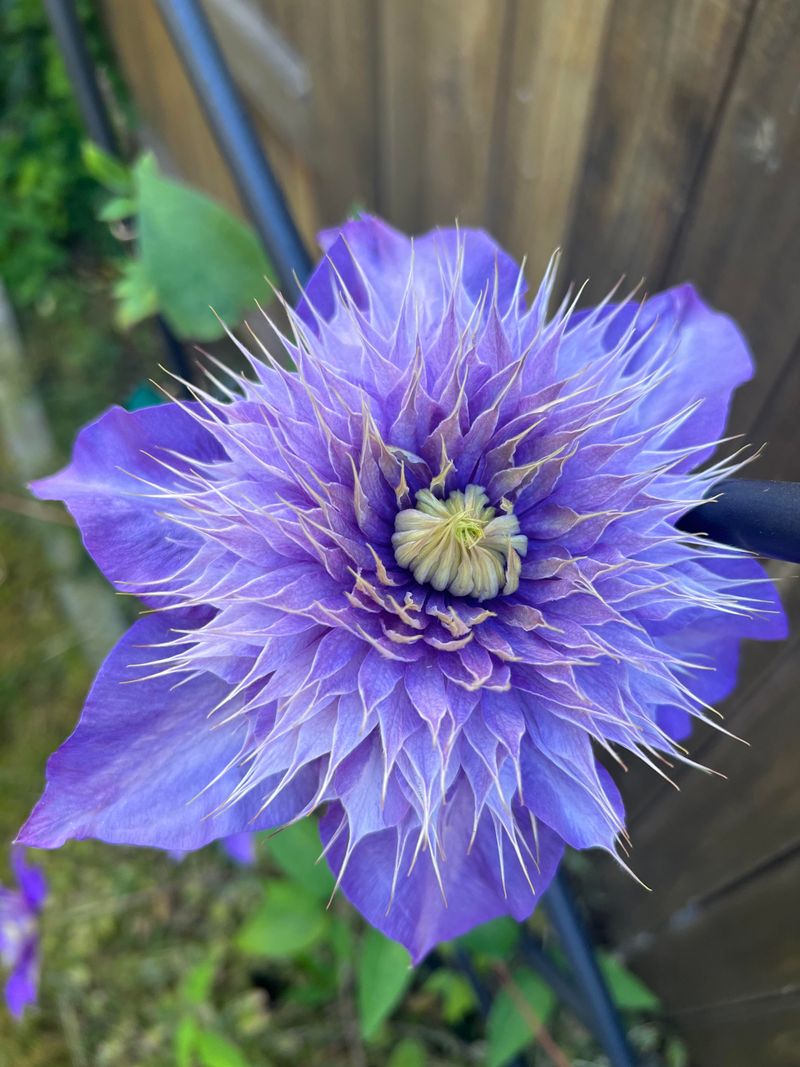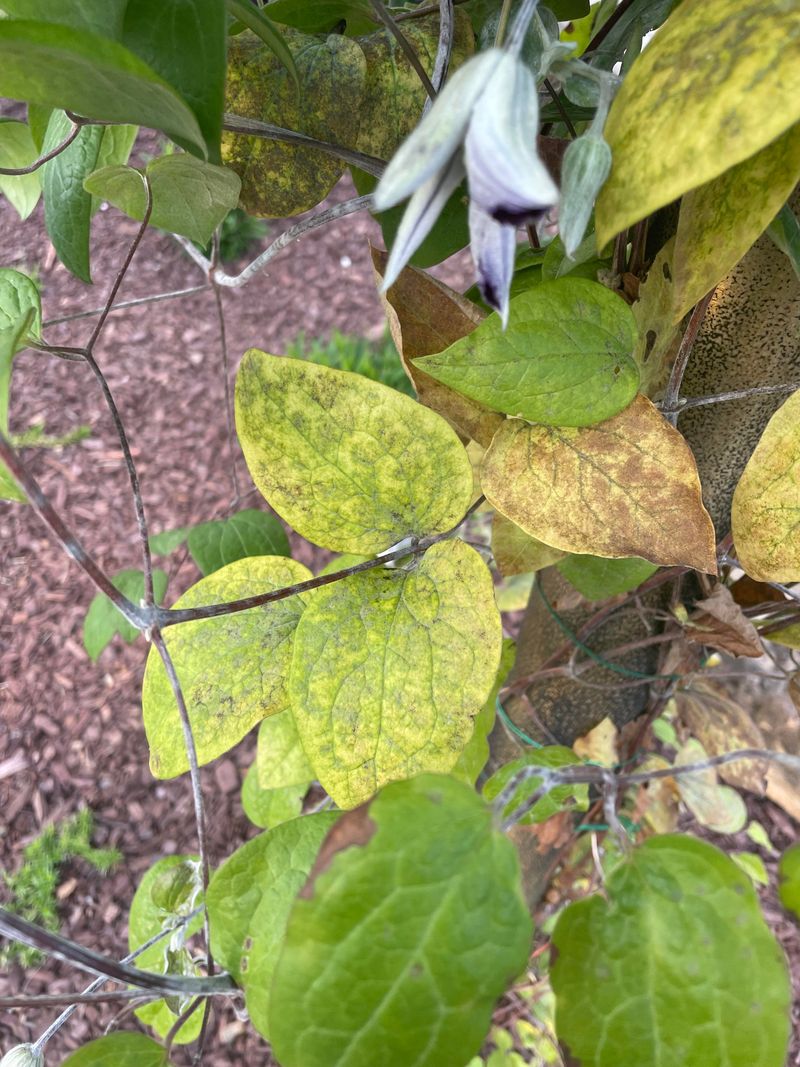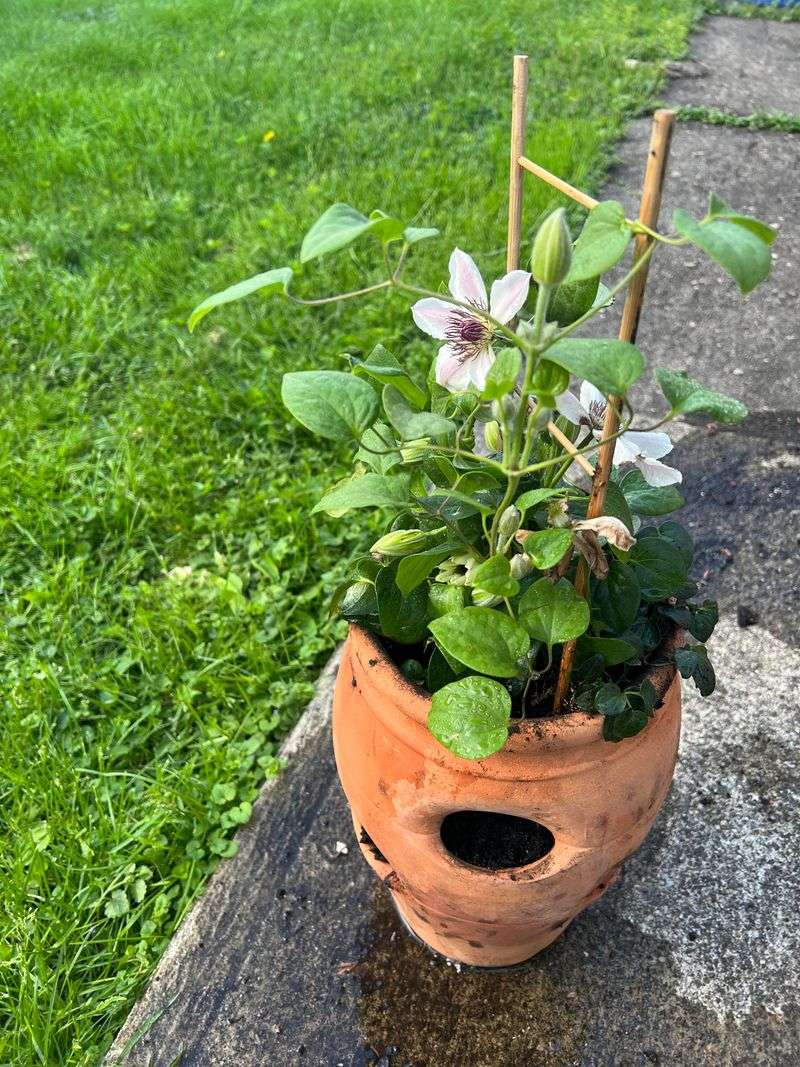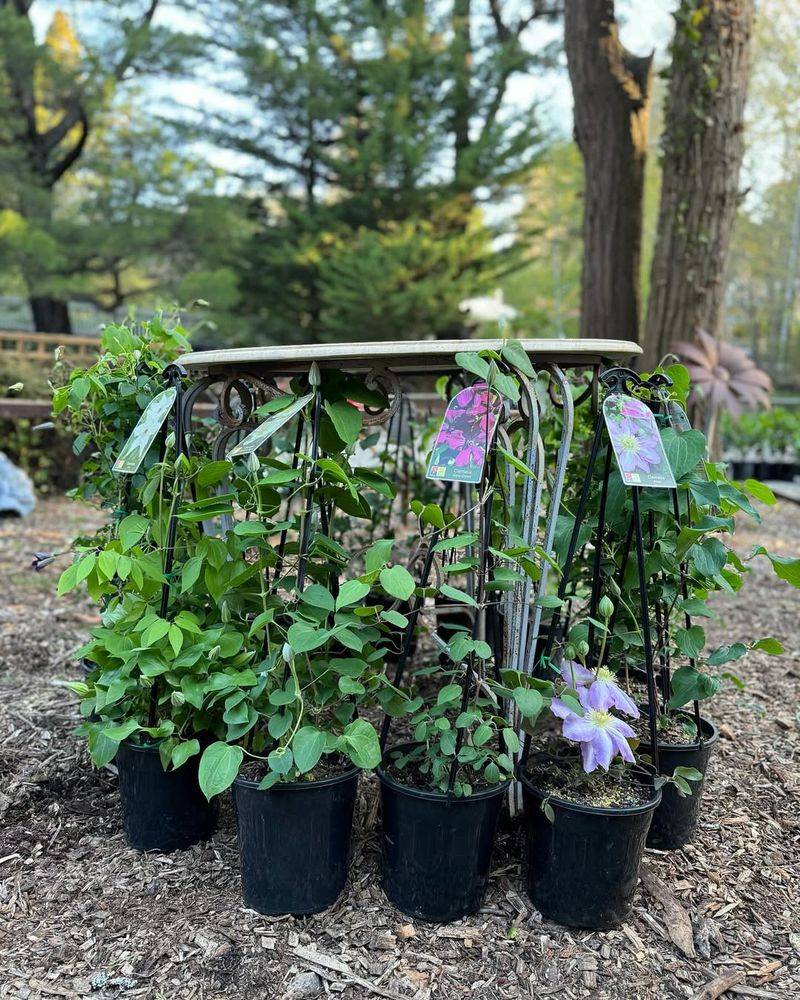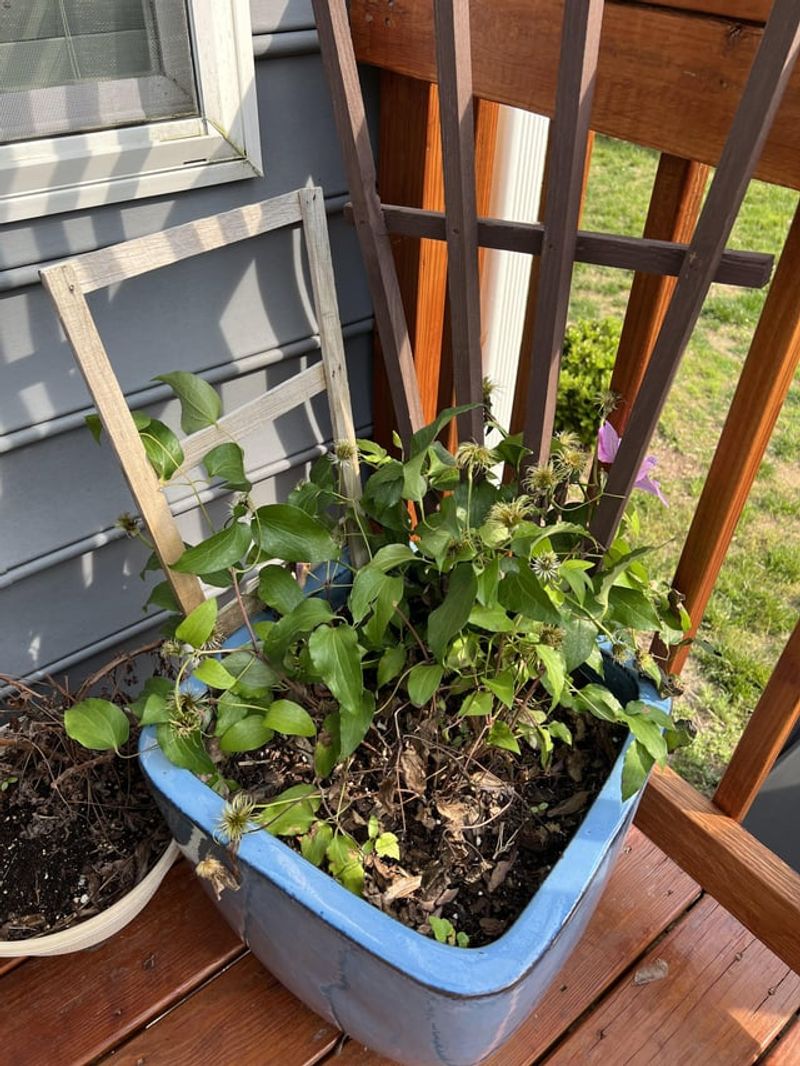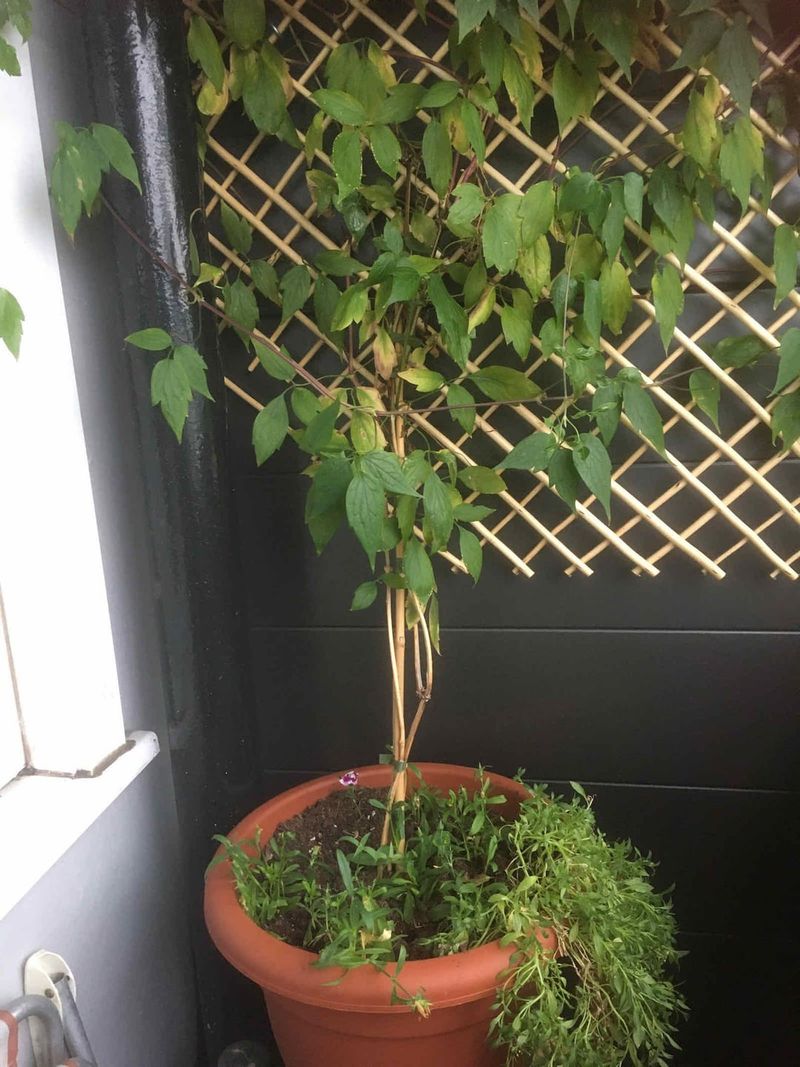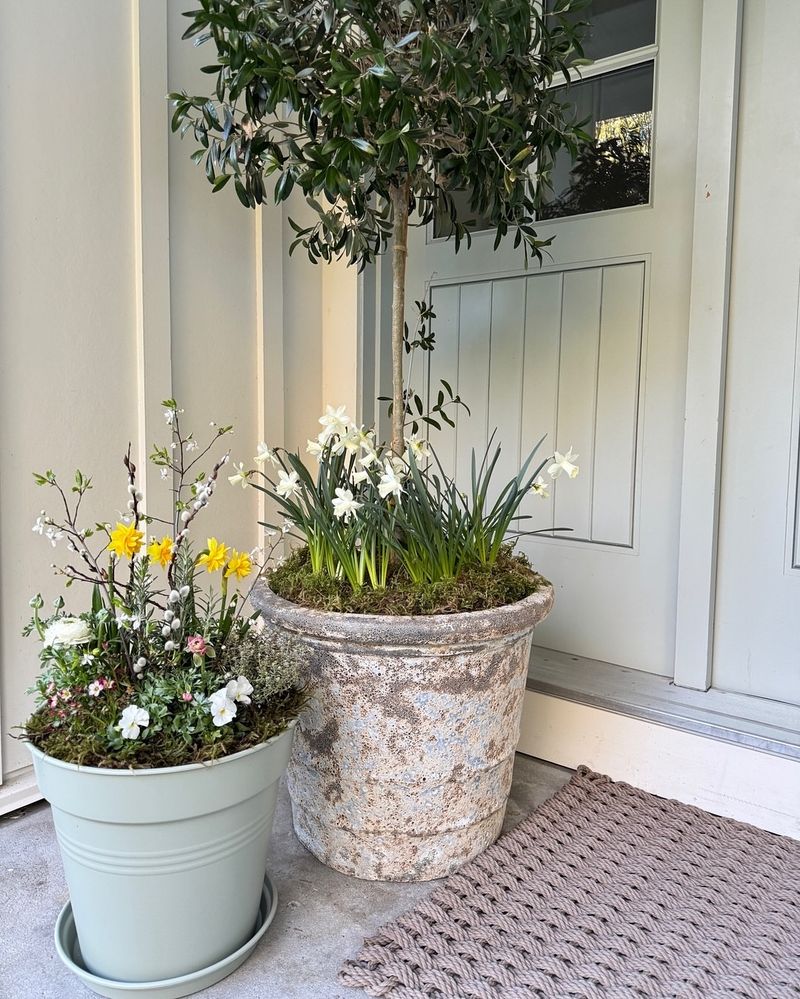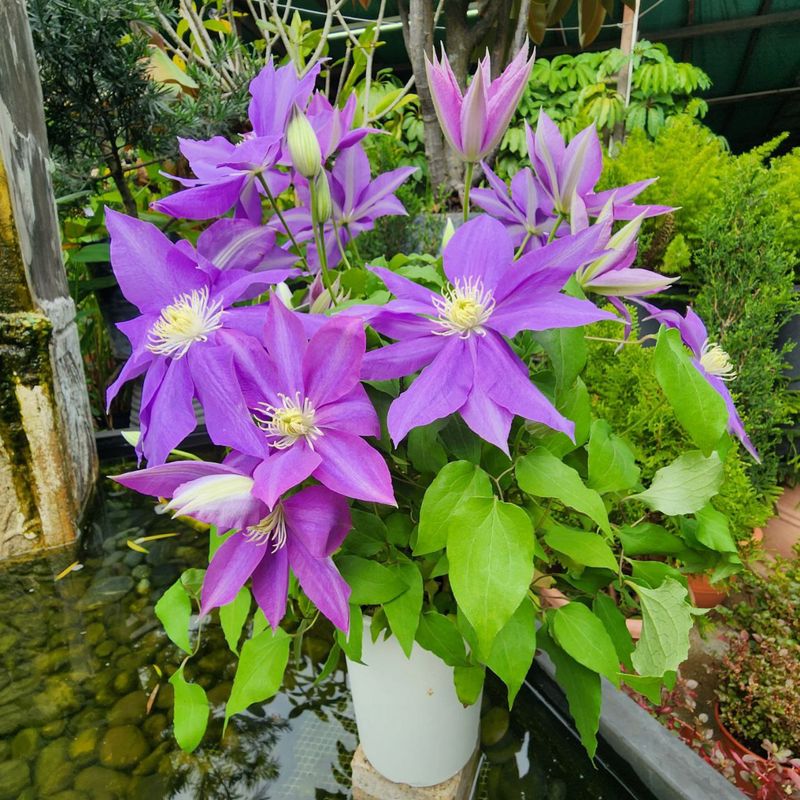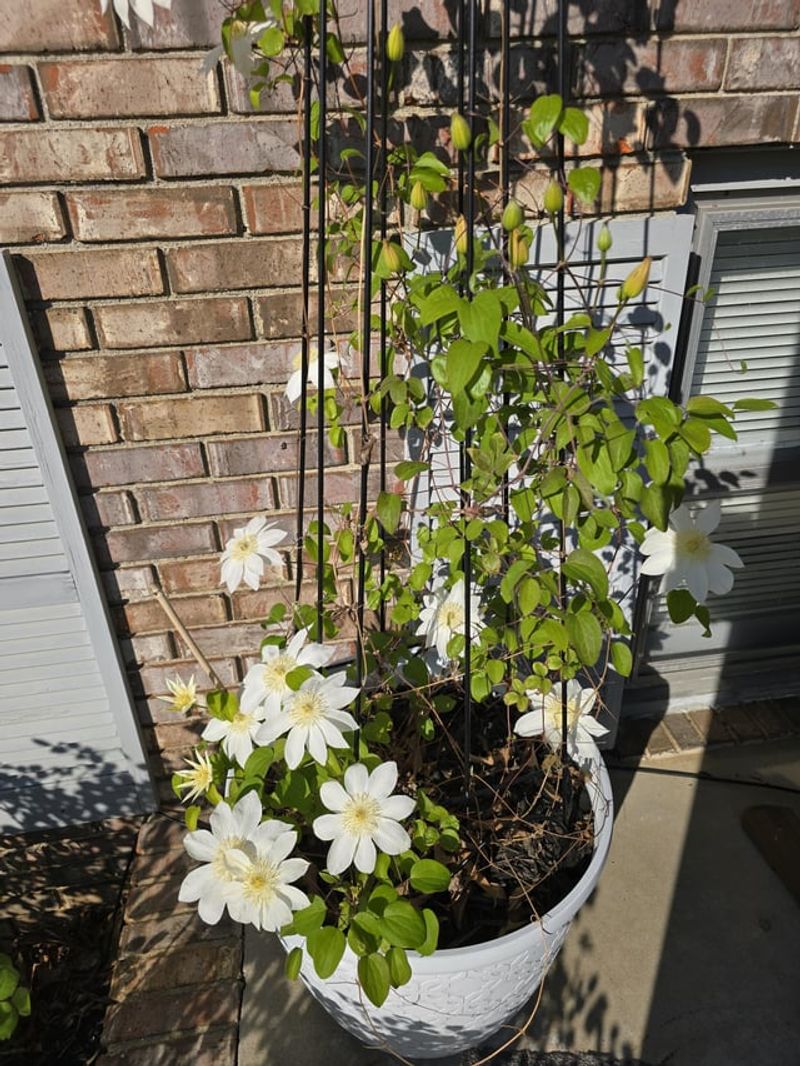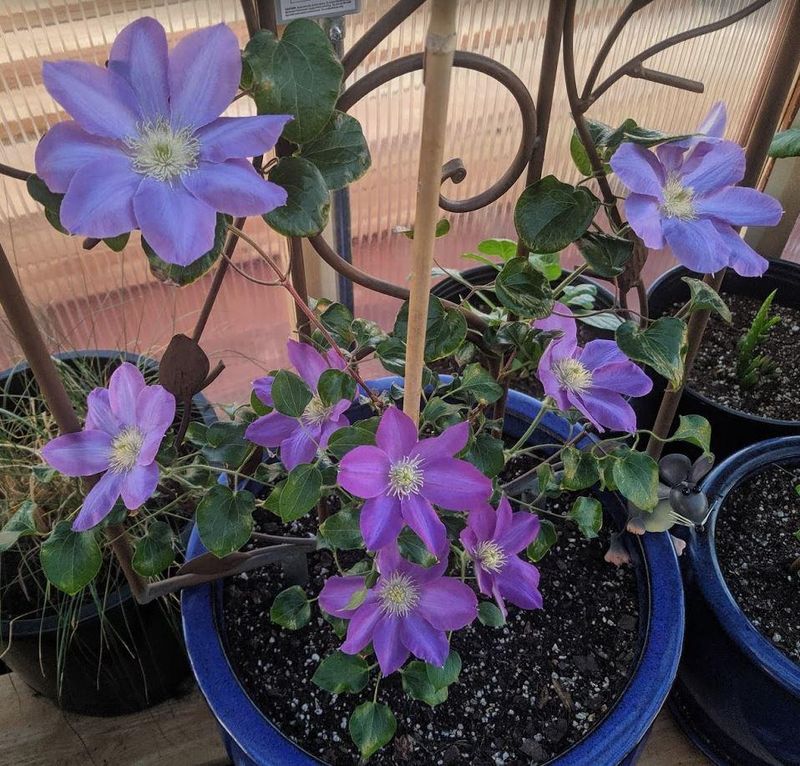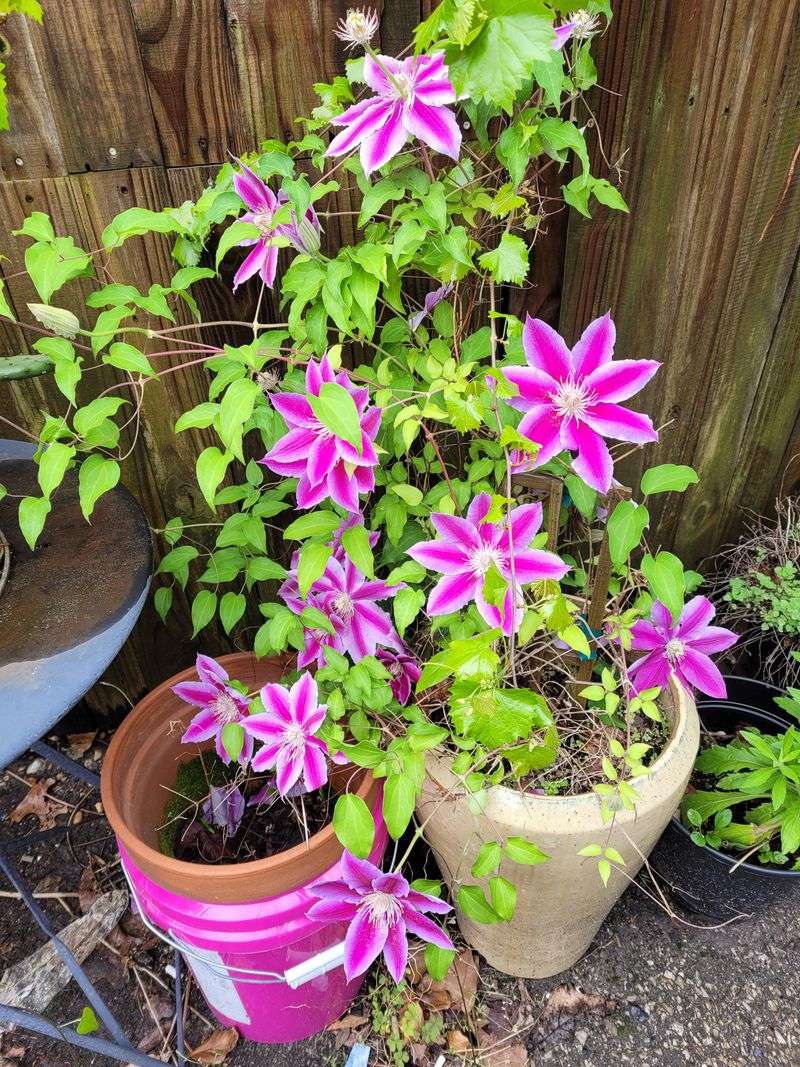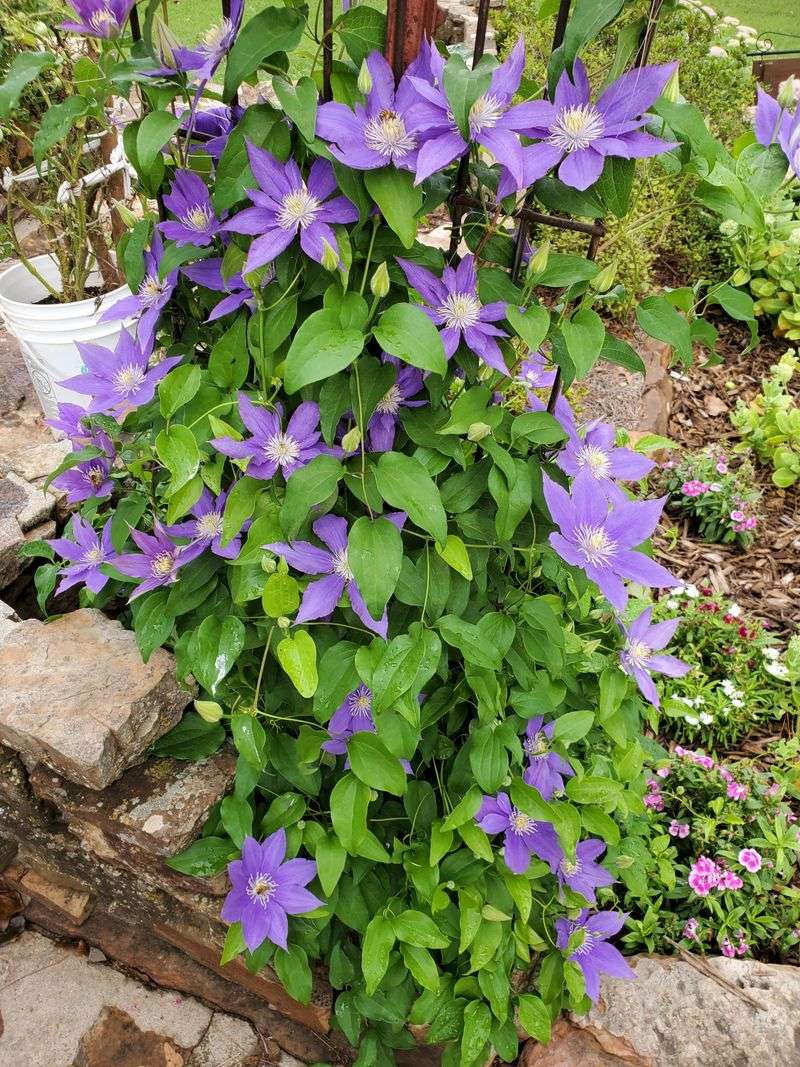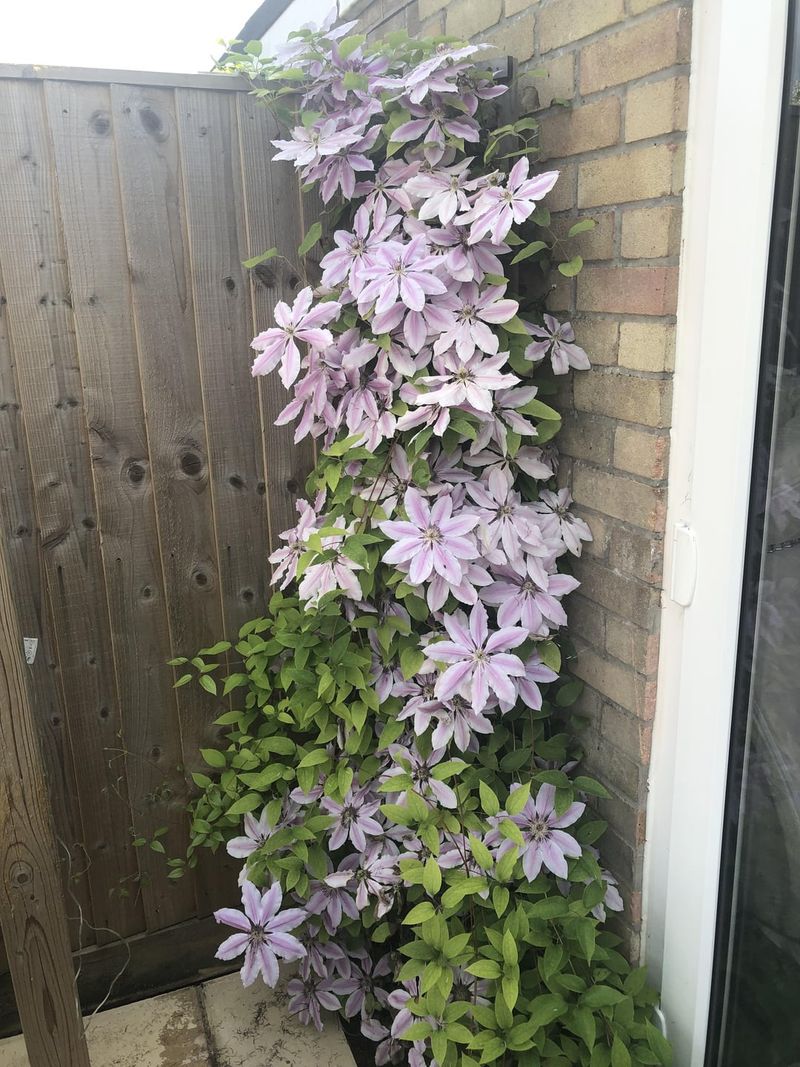Growing clematis in pots can be incredibly rewarding, and with a few helpful tips, you’ll have these stunning flowers thriving in no time. I’m here to share my favorite tricks that make all the difference in creating the perfect potted environment for them.
From choosing the right pot to keeping them happy with just the right amount of care, these tips will set you up for success. Trust me, once you get the hang of it, clematis in pots will become your go-to plant for any garden.
Let’s make sure those pots become the showstoppers they deserve to be!
1. Choose the Right Clematis Variety
Selecting the right clematis variety is crucial for pot success. Varieties like Clematis ‘Arabella’ thrive well in containers. Their compact growth and striking purple-blue blooms ensure they don’t overtake your space.
When choosing, look for varieties labeled as suitable for pots, as they generally have a more restrained growth habit. These plants are perfect for adding color without overwhelming your garden setup.
2. Selecting the Perfect Pot
The pot you choose can make or break your clematis-growing journey. Opt for a large, sturdy pot with ample drainage holes to prevent waterlogging. Terracotta pots are a classic choice, offering both aesthetics and functionality.
They provide the necessary space for root expansion and are less likely to tip over in the wind. Additionally, the porosity of terracotta helps prevent overwatering, a common pitfall. Consider the pot’s placement too – a sunny spot is vital for clematis to thrive and bloom.
3. Understanding Soil Requirements
Clematis have specific soil needs to flourish in pots. A rich, well-draining soil mix is essential. Incorporate compost or well-rotted manure to boost fertility and structure. This enhances the soil’s ability to retain moisture without becoming waterlogged.
Avoid heavy clay or sandy soils, which can hinder growth. A neutral to slightly alkaline pH is preferred, so consider adding lime if your soil is too acidic. With the right soil foundation, your clematis will have the nutrients and support it needs to bloom beautifully.
4. Ensuring Proper Drainage
Proper drainage is a lifeline for potted clematis. Without it, roots can suffocate in waterlogged conditions. Start by ensuring your pot has several drainage holes. Add a layer of pebbles or gravel at the bottom before soil to enhance drainage.
This prevents water from pooling and keeps roots healthy. Regularly check these holes to ensure they’re unblocked, especially after heavy rains. Good drainage not only protects your clematis but also lays the groundwork for robust growth and plentiful blooms.
5. Sunlight Exposure Needs
Clematis thrive on sunlight, making it a non-negotiable aspect of their care. Aim for at least six hours of direct sunlight daily. Morning sun is particularly beneficial, providing energy for growth and bloom.
Position your pots where they’ll receive ample light, but consider some afternoon shade in extremely hot climates to prevent leaf scorch. Adjust as needed with the changing seasons to maintain optimal exposure.
6. Watering Wisely
Watering is an art when it comes to clematis in pots. These plants need consistent moisture, but drenching them is a surefire way to invite root rot. Check the top inch of soil; if it feels dry, it’s time to water. Use a watering can for even distribution, focusing on the soil rather than the foliage.
During peak summer, you may need to water more frequently. Keep an eye on weather conditions and adjust your watering schedule to ensure your clematis remains healthy and vibrant.
7. Fertilizing for Flower Power
Feeding your clematis the right way can significantly boost its flowering potential. Use a balanced, slow-release fertilizer in early spring as new growth begins. This provides a steady nutrient supply throughout the growing season.
Alternatively, liquid fertilizers can be applied every 4-6 weeks during active growth for a quick nutrient boost. Be cautious not to over-fertilize, as it can lead to lush foliage at the expense of flowers. With the right feeding approach, your clematis will reward you with spectacular blooms.
8. Support and Trellising
Clematis are natural climbers, requiring support to reach their full potential. Install a trellis or obelisk in your pot to guide their ascent. Make sure the structure is sturdy enough to support the mature plant’s weight. As the clematis grows, gently train the vines to weave through the support.
This not only encourages vertical growth but also creates a captivating display of blooms. Regularly check the support system to ensure it’s secure and adjust as necessary to accommodate the plant’s growth.
9. Pruning for Health and Beauty
Pruning clematis is essential for maintaining their health and aesthetic appeal. Different varieties require different pruning techniques, generally categorized into three groups. Identify your clematis type to determine the best pruning time and method.
Regular pruning removes deadwood, encourages new growth, and can enhance flowering. Avoid heavy pruning of late-flowering varieties, as it can reduce blooms. With the correct pruning approach, your clematis will not only look tidy but also flourish with abundant flowers.
10. Mulching Magic
Mulching can work wonders for clematis growing in pots. It helps retain soil moisture, suppresses weeds, and provides an insulating layer against temperature extremes. Use organic mulch, such as bark chips or compost, around the base of the plant.
This not only nurtures the soil but also improves its structure over time. Keep the mulch a few inches away from the stem to prevent rot. By mulching effectively, you create a microenvironment that supports healthy growth and vibrant blooms.
11. Pest Patrol
Clematis, though hardy, can fall victim to pests like aphids and slugs. Regularly inspect your plant for signs of infestation, such as discolored leaves or unusual spotting. Natural remedies, such as neem oil or insecticidal soap, can effectively control minor outbreaks.
For slugs, consider using barriers or traps. Encourage beneficial insects, like ladybugs, that naturally prey on harmful pests. By staying vigilant and taking early action, you can keep your clematis thriving in its container environment.
12. Disease Defense
Clematis can sometimes suffer from diseases such as powdery mildew or clematis wilt. To defend against these, ensure proper air circulation around your plant. Avoid overhead watering to prevent fungal growth. If you notice any diseased leaves, promptly remove them to prevent spread.
Regular pruning and cleaning up fallen debris can also minimize disease risks. With careful monitoring and proactive measures, you can maintain a robust, disease-free clematis that thrives in its pot.
13. Temperature Tolerance
Clematis are remarkably adaptable but have their limits when it comes to temperature. Most varieties thrive in temperate climates, where they can bask in the warmth without scorching. During harsh winters, protect your potted clematis by moving it to a sheltered location or wrapping the pot with insulating material.
In summer, ensure they receive enough water to counteract heat stress. Being mindful of temperature changes and taking preventive steps will help your clematis flourish across the seasons.
14. Repotting Routine
As clematis mature, they may outgrow their pots, requiring repotting to maintain vigor. Typically, every two to three years is ideal for repotting. Choose a slightly larger pot and fresh soil to give roots room to expand.
Handle the root ball gently, trimming away any dead or damaged roots. Repotting not only refreshes the soil but also rejuvenates the plant, encouraging more vigorous growth and blooms. With each repotting, your clematis gains a fresh lease on life.
15. Companion Planting
Companion planting can enhance the beauty and health of your potted clematis. Consider planting with companions like lavender or ornamental grasses, which complement clematis’ vibrant blooms. These partners can help shade the roots, keeping them cool and promoting moisture retention.
Additionally, they attract beneficial insects, enhancing your garden’s ecosystem. When selecting companions, ensure they have similar water and light needs to your clematis. This harmonious pairing will result in a stunning and sustainable potted display.
16. Avoiding Root Disturbance
Clematis dislike having their roots disturbed, and unnecessary handling can impede growth. When planting, be gentle and avoid excessive movement. If you need to transport the pot, ensure it’s done with care. During repotting, handle the root ball cautiously, supporting it as you transition to a new pot.
This consideration helps maintain root health and stability. By minimizing disturbance, you provide a stable foundation for your clematis to flourish and bloom in its container garden.
17. Winter Care
Winter can be harsh on potted clematis, but with proper care, they can thrive. Before the frost hits, apply a thick layer of mulch around the base to insulate the roots. Move the pot to a sheltered location, or wrap it with burlap or fleece for added protection.
If possible, elevate the pot to prevent soil from freezing. During dormancy, reduce watering but don’t allow the soil to dry out completely. These steps ensure your clematis survives winter, ready to bloom again in spring.
18. Monitoring Growth Patterns
Paying attention to your clematis’ growth patterns can provide insights into its health and needs. Regularly monitor for signs of stress, like yellowing leaves or stunted growth. Keep a garden journal to track bloom cycles and any changes in appearance.
This record can help identify patterns or potential issues over time. By understanding its growth habits, you can adjust care practices, ensuring your clematis remains healthy and vibrant. This proactive approach leads to a flourishing potted plant.
19. Creating a Microclimate
Creating a supportive microclimate around your potted clematis can enhance its growth and resilience. Use windbreaks, such as fences or strategically placed pots, to protect from harsh winds. Companion plants can provide shade and humidity, keeping the microenvironment balanced.
By tailoring these factors, you can optimize conditions to mimic a more natural setting, which clematis thrive in. This thoughtful environment fosters health and increases bloom potential, making your clematis a standout feature in your garden.
20. Dealing with Wind
Wind can be a formidable adversary for potted clematis. Secure your pot with a sturdy trellis or place it near a windbreak to minimize exposure. Regularly check the stability of your support system to ensure it withstands gusty conditions.
In extreme cases, relocate the pot to a sheltered area or use additional ties to secure the vines. By mitigating wind impact, you protect your clematis from damage, allowing it to focus energy on growth and flowering.
21. Humidity Considerations
Humidity levels can significantly affect clematis’ growth in pots. In dry climates, increase humidity by misting or placing a tray of water nearby. This helps prevent dehydration and stress, which can impede growth.
Conversely, in overly humid conditions, ensure good air circulation to prevent fungal diseases. Adjusting humidity to your clematis’ preference promotes healthy foliage and blooms. Through careful management, you create an ideal environment where your clematis can thrive, regardless of external conditions.
22. Root Zone Cooling
Maintaining a cool root zone is vital for clematis in pots, especially during hot spells. Use mulch and companion plants to shade the soil, keeping temperatures moderate. Consider pot placement; a spot with morning sun and afternoon shade works best.
By prioritizing root zone cooling, you reduce stress and promote robust root development. This stability supports overall plant health, ensuring vibrant blooms. A cool root environment is a secret weapon in keeping your potted clematis healthy and thriving.
23. Feeding Frequency
Consistent feeding is crucial for maintaining a healthy, blooming clematis. Plan a feeding schedule that aligns with the growing season. Early spring is the time for a slow-release fertilizer, while liquid feeds can be applied every few weeks during active growth.
Observing your plant’s response will guide adjustments in frequency and type. Over-feeding can be detrimental, so moderation is key. By staying attentive and responsive to your clematis’ needs, you’ll ensure a lush, flowering plant season after season.
24. Deadheading Techniques
Deadheading is a simple yet effective technique to encourage continuous blooming in clematis. Remove spent flowers regularly to redirect energy into new growth and more flowers. Use clean, sharp scissors to cut above a set of leaves, promoting bushier growth.
This practice not only enhances appearance but also prevents seed formation, keeping the plant’s energy focused. Deadheading throughout the growing season ensures a consistently vibrant display of blooms, making your clematis a standout feature in the garden.
25. Encouraging Bushy Growth
For a fuller, bushier clematis, strategic care is vital. Early pruning encourages side shoots, enhancing plant density. Regular feeding supports lush growth, while careful deadheading promotes branching. Choose a container that allows root expansion, supporting above-ground growth.
Providing consistent moisture and light ensures that the plant doesn’t become leggy. By focusing on these elements, you can cultivate a clematis that is not only vibrant but visually lush, transforming your pot into a spectacle of greenery and blooms.
26. Creating Visual Impact
Creating visual impact with your potted clematis involves a blend of color, form, and placement. Choose a clematis variety with bold blooms that contrast or complement your pot’s color. Arrange your pot where it can be a focal point, such as an entryway or patio.
Incorporate elements like trellises or companion plants to add height and dimension. This thoughtful arrangement not only enhances the plant’s beauty but also elevates the overall aesthetic of your garden space, making your clematis a captivating centerpiece.
27. Understanding Growth Cycles
Understanding clematis’ growth cycles can optimize care and enhance blooms. These plants typically follow a cycle of dormancy, growth, and flowering. Recognizing these stages allows for timely interventions, like feeding and pruning, to support each phase.
During dormancy, minimal watering is needed, while growth phases require more nutrients and water. Awareness of these cycles ensures your clematis receives the right care at the right time, maximizing its flowering potential and overall health.
28. Caring for Young Plants
Young clematis plants require special attention to establish successfully in pots. Begin with nutrient-rich soil and ensure proper drainage. Support early growth with a small trellis, guiding the vines gently. Regular watering and light feeding promote robust development without overwhelming the plant.
Protect young plants from extreme weather, ensuring they have the best start. By nurturing these fledglings with care, you set the stage for a thriving, mature clematis that will reward you with beautiful blooms.


